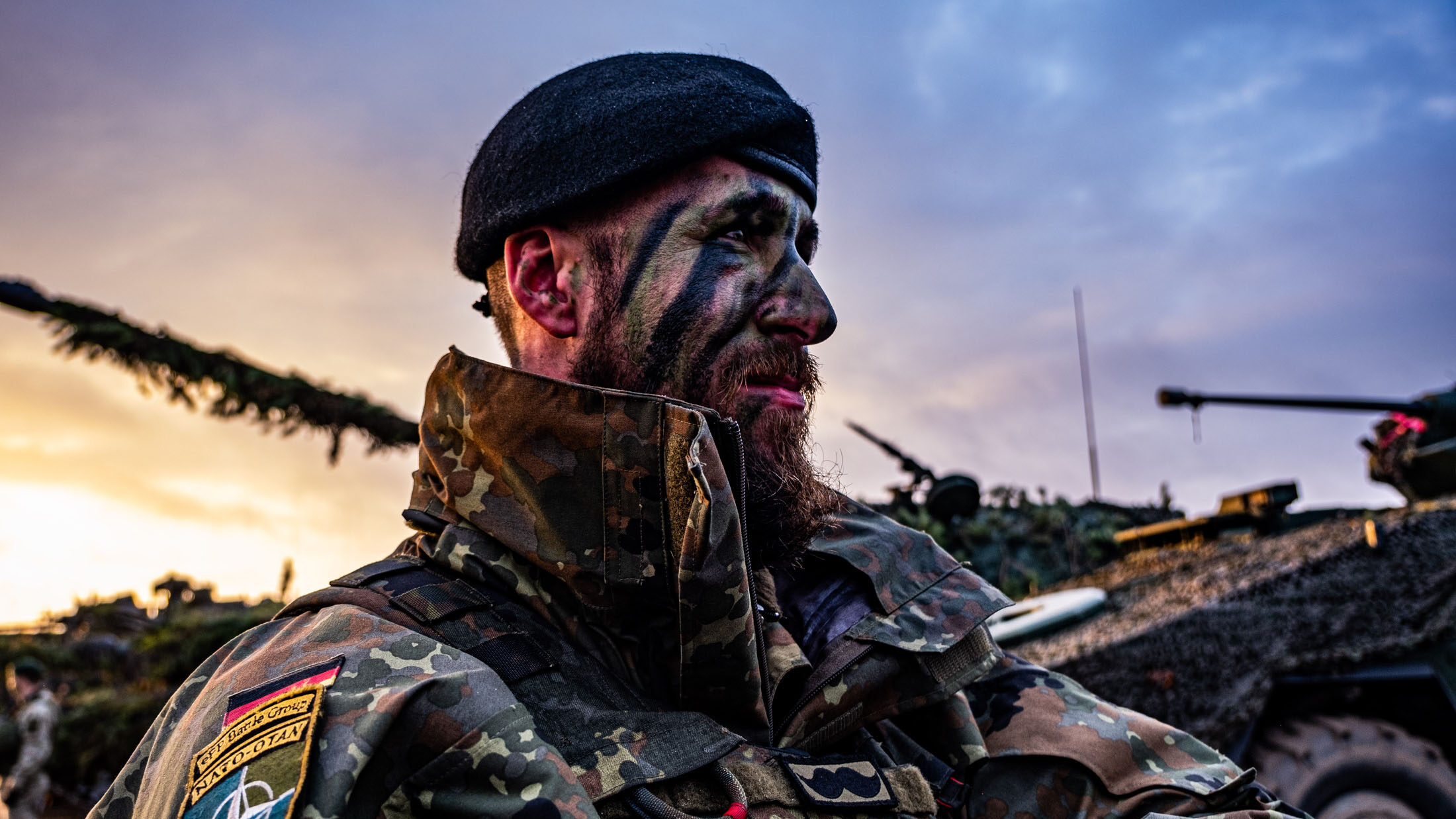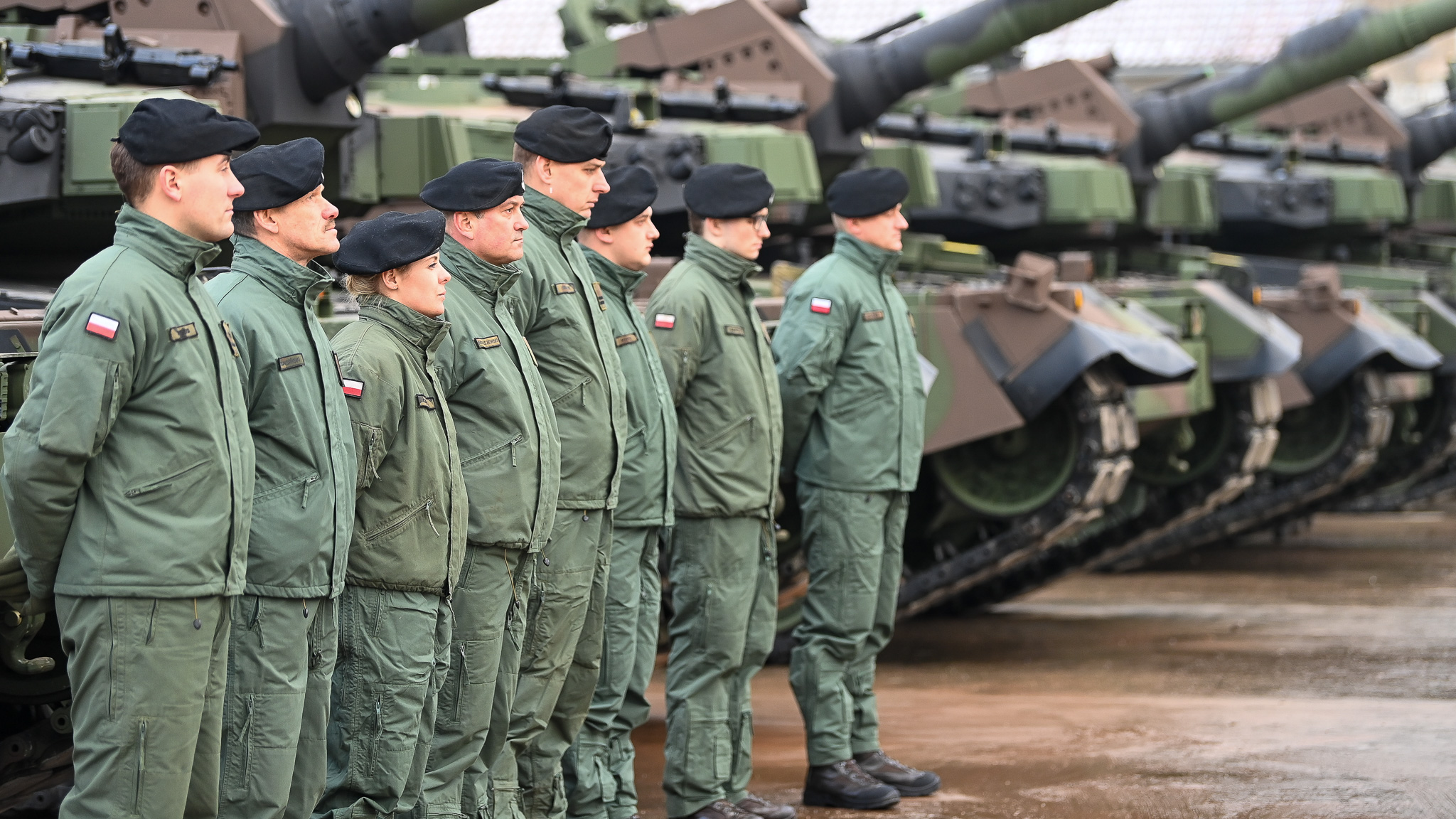
A German soldier stands by at exercise Iron Wolf in Lithuania (NATO)
BELFAST – If you missed it with all that happened in Eastern Europe in 2022, let me draw your attention to the story of former President Donald Trump saying that as president he had threatened to not support NATO countries if they came under attack from Russia.
His reason for taking the position was simple: European alliance members weren’t paying enough. The remarks were made earlier this year at a Heritage Foundation event in Florida and supposedly linked to NATO’s 2018 summit in Brussels, according to the Washington Post. Demanding that European nations increase defense spending was a constant refrain from Trump during his time in office and, if truth be told, he had a point, at least about the budgets. Look at Germany traditionally refusing to not nudge the needle even close to NATO’S 2 percent GDP spending target.
So it was to the surprise of many that German Chancellor Olaf Scholz announced on Feb. 27 that the country would invest €100 billion ($106 billion) in a special arms fund and meet NATO’s 2 percent standard. This was a genuinely historic moment for a nation whose own ministry of defense admitted in a Dec. 6 armaments report that it had suffered from three decades of peacetime underfunding, has held bruising political battles over weapons exports and arming drones.
Should we forget too that not so long ago none of Germany’s six 212 submarines were mission capable, it had availability issues with Airbus A400M transport aircraft, while defense analysts noted Bundeswehr operational units often having to work with only 70% of their required equipment?
[This article is one of many in a series in which Breaking Defense reporters look back on the most significant (and entertaining) news stories of 2022 and look forward to what 2023 may hold.]
Those difficulties look to be a whole lot easier to smooth out with the special arms fund driving change like never before. Gone are reservations about acquiring US equipment with 35 Lockheed Martin F-35A Lightning II fighter jets and eight Boeing P-8A Poseidon maritime patrol aircraft on their way.
With those plans considerably bolstering NATO capabilities, the alliance can also look forward to enlargement with Sweden and Finland both due to receive membership next year. Prompted by Russia’s war in Ukraine, the Nordic nations decision to join NATO has been widely supported by other members with the exception of Turkey and Hungary. The stance of Turkish President Recep Tayyip Erdogan remains all important as he seeks assurances from Sweden that it no longer offers refuge to Kurdistan Workers’ Party (PKK) members. Sweden has so far responded in kind by deporting those with links to the Kurdish group. More promisingly, Hungarian Prime Minister Viktor Orbán has said Hungary’s parliament will ratify Sweden and Finland’s application in early 2023.
Once the two new countries join NATO, a firm sense of how their armed forces will contribute to the alliance’s deterrence posture will become clear, but air power capabilities including Saab Gripen and future F-35A fighter jets are ideally suited to countering Russian threats.
Besides how NATO expansion influences European security, 2023 could see a dramatic change in spending power among the leading nations within the alliance. If Germany, as forecast, meets NATO’s 2 percent target, it would also overtake the UK as the alliance’s second highest spender on defense behind the US, unless London spends upward of 2.5 percent GDP, according to the Office for Budgetary Responsibility.

Polish soldiers from the 20th Mechanized Brigade attend a K2 tank delivery ceremony (Polish Ministry of Defense)
Even so, 2023 will bring with it an expectation that Germany and the collection of 19 other NATO countries that committed to increase defense spending after Russia invaded Ukraine act on those plans by going on military shopping sprees. To give a sense of the spike in demand for military equipment, consider Poland’s state owned PGZ reportedly planning to invest $1.8 billion “over the next decade” — a sum more than doubling its own pre-war spending forecasts.
The Polish MoD’s massive modernization spending spree aligns with such industrial ambition, as it continues to pursue acquisitions with gusto. This slick pace of orders, post Ukraine war, have restored Poland’s procurement reputation, once so closely associated with sparse financial resources and over promising. Warsaw can finally look forward to a new fleet of attack helicopters after securing a deal with Boeing for 96 AH-64E Apache aircraft. Other new orders include 1,000 K2 tanks, 672 K9 self-propelled howitzers, 48 FA-50 light combat aircraft and 500 High Mobility Artillery Rocket Systems (HIMARS). Meanwhile, a first of 32 F-35A fighter jets is due for delivery in 2024.
These acquisitions are the kind that Poland would so often talk about but subsequently delay or cancel. But with a war on its border, there can be no excuse for scaling down investment. With that in mind and Russia’s menace still dominating NATO thinking, 2023 will likely see European defense spending less laughed at by critics but rather applauded. Trump’s threat might not have worked, but Putin’s most certainly has.






















